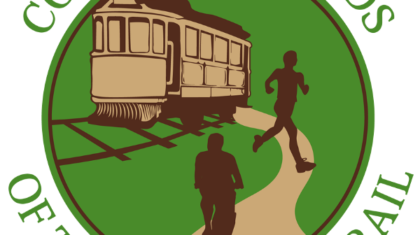
By nature, community planning is forward looking and speculative. In forecasting future investments, we tend to look at factors such as historic trends and growth projections. When designing streets, we turn to industry standards that tend to plan for extreme events. This ranges from multi-lane highways built for rush hour to parking standards requiring a minimum number of spaces based on peak usage.
These forecasting methods are coming under fire as a new generation of planners are taking a forensic look at how outdated standards actually drive congestion, inefficient land use, and unsafe conditions. Add to that the unprecedented, fast-paced impacts of technology disruption and it becomes clear our existing set of tools needs an update.
It is imperative upon our industry to develop new tools and planning approaches to help manage uncertainty and leverage technology to design communities that stand the test of time while delivering multiple benefits.

The New Toolbox
In order to harness the benefits of new mobility while minimizing the risks, planners need to revamp their toolbox and approach to community and street planning. The U.S. Department of Transportation (USDOT) is promoting two new approaches that are helpful in planning for emerging smart city and transportation technologies: next generation scenario planning and performance-based planning.
Next Generation Scenario Planning
Regional planners have traditionally used visioning and forecasting in developing long range transportation plans. Past models typically addressed growth scenarios in order to develop roadway planning and/or expansion.
In 2011, the Federal Highway Administration (FHWA) released its Scenario Planning Guidebook for transportation agencies and their stakeholders, later updating the Guide in 2017 to include next generation scenario planning in large part to address disruptive technology.
Scenarios can be normative (working towards a defined goal or vision) or exploratory (working from trends to develop trajectories). Scenarios can be built around one technology or technology bundles since communities are dealing with multiple lines of disruptive technology related to transportation: vehicles, parking, and energy.

Performance-Based Planning
The FHWA is also embracing and expanding performance-based planning, a method for applying performance management principles to transportation system policy and investment decisions. A transportation agency will establish desired performance expectations and monitor how the system is meeting (or not meeting) those goals. Technology comes into play in two ways. First, technology facilitates constant tracking through automated monitoring and reporting. This allows real time assessment and adjustments in ways unimaginable just two decades ago.

Second, agencies can set desired performance goals for transportation technology and adjust policy and operations with real time reporting. For example, agencies are setting performance expectations for shared-use mobility services in underserved neighborhoods. For example, Chicago’s permit requires rebalancing to ensure that at least 15% of a vendor’s fleet is available according to the Equitable Distribution Map.
Prognostication into Practice
Scenario planning is a powerful tool for forecasting a desired, technology-powered future in 20 years or beyond. Performance-based planning helps monitor and report on existing systems. However, there is a still a practical gap: how does a community get started and what are the steps along the way?
This is where a third approach, referred to as anticipatory planning, can help chart out both a desired future and incremental planning milestones. What are the advantages of this variation on scenario planning?
Identifying impactful and immediate drivers of change
The heavy focus on planning for autonomous vehicles is drawing attention away from technology available now. Anticipatory planning works backwards from the future to better frame existing, trending, emerging, and future technologies — which could range from dockless bikeshare to microtransit to payment integration platforms. Therefore, the first step is identifying drivers of change and associated trends.
Multi-benefit placemaking
Great placemaking rests upon design that stands the test of time and delivers multiple benefits. If certain technology predictions don’t come to pass, a foundation of great placemaking still delivers a myriad of health, economic development, multimodal accessibility, and resiliency benefits. In planning, technology should fit within a foundation of great placemaking, not the other way around.
Designing better pilot projects
Most new transportation technologies are not adopted all at once, but rather tested in small batches through pilot projects. This is an essential approach to limit risks and safeguard public resources. However, many pilots don’t plan beyond the first phase. Anticipatory planning can help imagine successfully launching a technology end to end: from initial test to full service.
Incremental performance stages
Pilot design can develop pilot phases and expected quantitative and qualitative performance expectations to be met before scaling up to the next phase. Any technology that does not meet the criteria means a company must develop an alternative pilot plan or halt the pilot. Not every technology will make it into every community’s mobility portfolio. Likewise, the roadmap produced through anticipatory planning will likely need constant assessment and adjustments.
Public Input and Accountability
Anticipatory planning packs a lot of activities into one process, which is needed to get in front of change quickly while respecting a good public process. Far too often, the technology industry frames a local government’s chief role as “getting out of the way.” In reality, local governments should play an active role in creating a path to adoption where success benefits all stakeholders. Successfully engaging civic stakeholders should occur in a relatable way, ranging from a simple kick-off question campaign to visual simulations based on crowd-sourced scenarios.
Putting it all Together: Planning for Trends and Transitions
In looking at trends, we like to assign technology to one of four categories: existing, trending (gaining market share), emerging (test phase or early market), and future (commercially unavailable and uncertain). Over time, technologies will shift categories with increasing marketplace adoption. This is helpful to track locally since a technology with an established presence in one area may only be in the early pilot phases in another.
Case Study: Parking
The table below shows an example of mapping out anticipating parking technology. In addition to the technology itself, a community or land owner will also need to think about parking infrastructure, as well as planning, policy, operations, and governance.

While helpful, the conventional practice of addressing parking as a singular topic doesn’t address fundamental aspects of managing and providing parking in the future.
Right-sizing parking is a hot topic and focused on taking advantage of new technology coupled with effective transportation demand management (TDM) measures. Not all of the essential technologies, though, are classified as parking technology. For example, Summit N.J. decided to forego a $10 million parking structure at a crowded commuter rail station, instead partnering with Transportation Network Companies to provide commuters rides to the station.
This illustrates how a community needs to 1) first address success factors, such as increasing first mile/last mile access and reducing parking demand; 2) then identify barriers to achieving those success factors; and 3) then track and anticipate several modes and technologies at once — in both the digital and physical space — that may play a role in effectively determining needs and opportunities. This same focus is becoming prevalent in every realm of mobility planning as multiple technologies converge and modes are increasingly mixed within fleets, business models, and multi-modal trip linking.
When it comes to parking, this need for a multifaceted planning lens begs the question: What actually drives down parking spot demand? The three main strategies are (1) lowering car ownership to one or zero car households, (2) boosting access to transit, shared rides, and active modes to reduce overall car trips, and (3) creating more districts for “park once” trip making.

Applying New Approaches
The parking case study points to several key principles that underscore the value of anticipatory planning as well as how to get the most out of the process.
Beyond the single gadget and silo
Cities, counties, campuses, and real estate developers field numerous smart city and mobility technology pitches. However, as Table 2 shows, there is a “planning stack” of underlying community goals and vision, urban and street design, digital infrastructure, transportation demand management (TDM), multiple mobility modes, and buildings. Within and between stacks, planners and decision makers will need to understand best practice feedback loops and bundles that amplify benefits in their local settings. This includes scaling up to review districts rather than individual planning elements in isolation, as seen through this case study into parking.

Managing (and embracing) unknowns
A Planning department’s job has historically revolved around eliminating unknowns and risks. That approach through rigid standards and codes is stifling economic opportunity, particularly in times of rapid change. Instead, planners need to embrace an experimental, iterative approach through pilot projects and flexible design standards. “Future proofing” is the term increasingly used to describe this. The best, and in fact only, way to tackle it is to develop future scenarios, along with the steps that will likely occur along the way. Working backwards from the future, informed planning can reveal not only possible changes in the long term, but also near-term opportunities.
Leveraging the tools we already have
Using the anticipatory planning process to identify near-term opportunities, opens the door for applying existing tools and strategies to tackle new challenges. As planners try to take futuristic scenarios and tentative postulations and translate those into practical, actionable solutions, the tactics already used in placemaking, active transportation, and micro-mobility provide a useful framework. With tactical urbanism, pop-up parks, demonstration projects, temporary installations, pilot programs, flexible and removable infrastructure, and more — the strategies used in designing, implementing, and evaluating small scale projects can be applied to new project types and scaled up for larger, multi-faceted mobility labs. The value comes in finding real-world contexts for designing experiments. When combined with a broader lens of anticipatory planning, these real-world experiments can test theories on-the-spot, document the influence of various drivers of change, and provide the information needed to pivot to other short- and long-term planning approaches.

The end game for all of this is to understand the impacts of new mobility trends and to harness the potential gains. Communities can proactively work to use new technologies to build better places. Planners can use anticipatory planning as a way to embrace uncertainty and craft practical strategies with the knowledge that (1) phasing will occur, (2) there will be a new realm of actors to make it happen, and (3) it is possible to get in front of the unknowns.
Alta is leading the active transportation industry in applying innovation and technology to multimodal planning and design. The New Mobility Group is part of the Alta Innovation Lab, a unique research forum dedicated to fostering and prototyping innovative mobility concepts to advance and transform human-centered transportation.
We create great places that harness the power of technology while maintaining the value of timeless placemaking principles to support healthy, active, and connected communities. For more information, reach out to our New Mobility Group.
What are your insights and questions about planning communities for the future? Let us know in the comments below.


